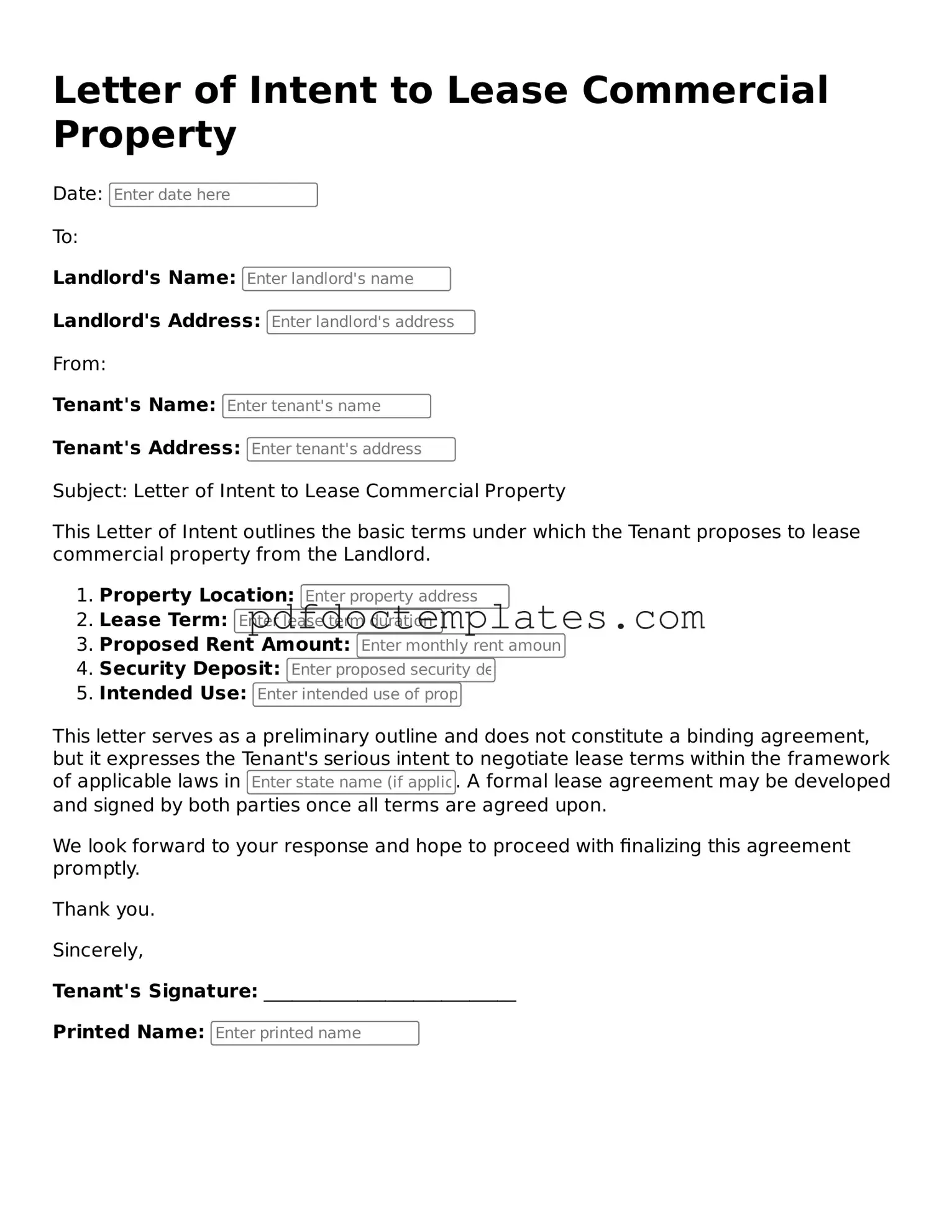Printable Letter of Intent to Lease Commercial Property Template
A Letter of Intent to Lease Commercial Property is a preliminary document that outlines the basic terms and conditions of a potential lease agreement between a landlord and a tenant. This form serves as a starting point for negotiations, helping both parties understand their intentions before drafting a formal lease. If you're considering leasing commercial space, take the first step by filling out the form below.
Access Your Document
